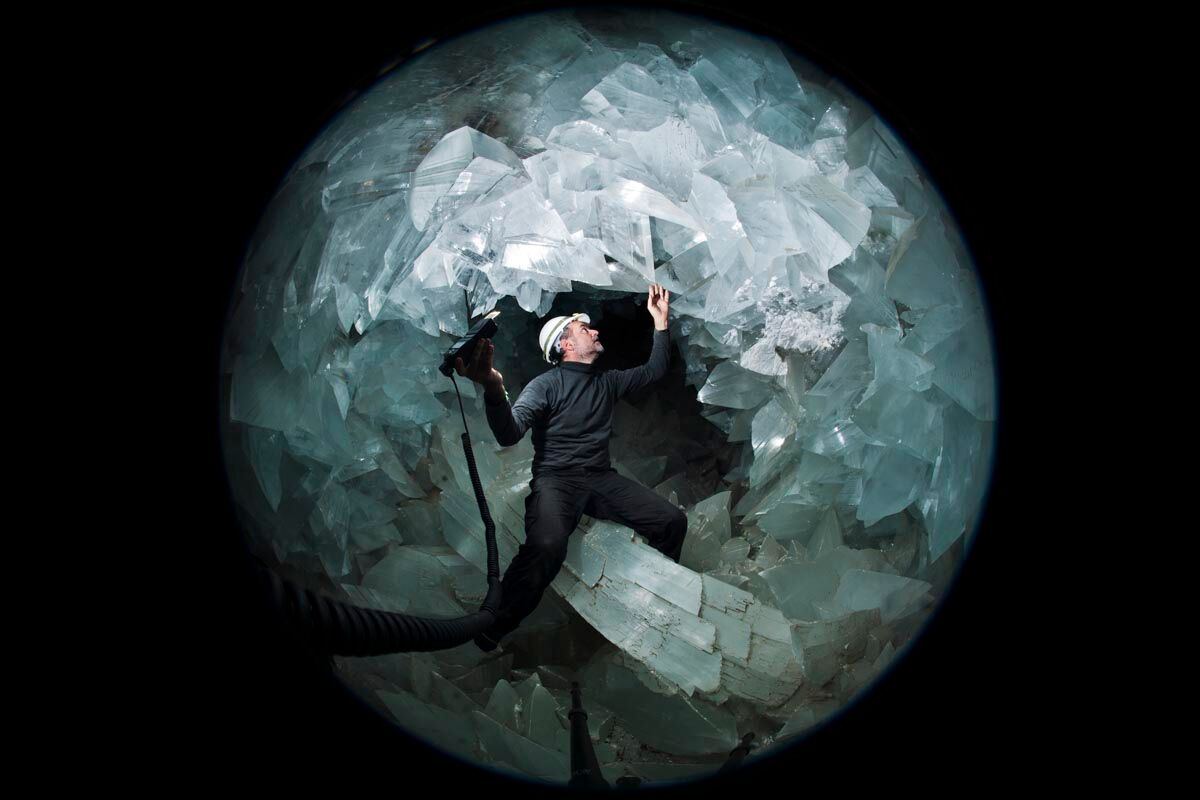When you buy through links on our site , we may earn an affiliate mission . Here ’s how it works .
scientist have discover a series of meandering , interconnected consortium chockfull of carbon dioxide deeply in the Aegean Sea . These pools , which are an iridescent whitened colour could shed Christ Within on questions about deep - sea storage of carbon and also cater a direction to supervise for succeeding eruption of the Santorini volcano , whose volcanic crater holds the carbon pools . Here ’s a expression at what the research worker found hide beneath the ocean . [ Read full story on Aegean ’s hidden pools ]
Beautiful lakes

The crew deploys Girona 500 into the Aegean Sea to pinpoint odd chemical signatures in layers of water.
Using underwater vehicles , the outside team discovered the pools in the volcanic crater of the Santorini vent , which erupted and wiped out the Minoan civilisation along the Aegean Sea in 1600 B.C. Here a facial expression at one of the pool , which have been identify Kallisti Limnes — Hellenic for " most beautiful lakes . " ( Photo Credit : Rich Camilli , Woods Hole Oceanographic Institution )
high-pitched - technical school dive
The bunch from the R / V Aegaeo organise Girona 500 , an self-governing underwater vehicle ( AUV ) operated by the University of Girona . The squad used the AUV , equipped with the TETHYS raft spectrometer ( picture strapped to Isaac Hull ) , to key undersea layers of water supply that had unusual chemical properties . Santorini island can be look in the background . ( Photo Credit : David Ribas , University of Girona )

Deploying Girona 500
The crew deploy Girona 500 into the Aegean Sea to nail odd chemical signature tune in bed of water supply . The data revealed the carbon copy pools at depth.(Photo Credit : Paraskevi Nomikou , University of Athens )
ocean track

The crew deploys Girona 500 into the Aegean Sea to pinpoint odd chemical signatures in layers of water.
The researchers break the Kallisti Limnes carbon pools ( white star ) in the Santorini volcano crater ( demonstrate : topographic relief single-valued function of the northern Santorini volcanic arena ) . The onshore Kolumbo fault is bespeak by a dashed red line , which along with the Kolumbo stock , make up part of the Christianna - Santorini - Kolumbo tectonic line .
The inset box shows a elaborated sight from the southwest of the caldera side plumbing around the field of study internet site . The track lines of the submergible fomite can be seen in carmine , orange and yellow lines , which match to the first and second AUV plunk , and the human - take fomite ( HOV ) dive , severally . ( Illustration good manners of Camilli , et al )
Water slide

Here , microbial Fe mat with a flow communication channel run through them that cascades down a slope from a pool full of C dioxide at a depth of about 820 foot ( 250 meter ) .
Kallisti Limnes
At 770 feet ( 235 m ) depth beneath the Aegean Sea , lie the meandering hydrothermal syndicate called the Kallisti Limnes about 3.3 to 6.6 feet ( 1 to 2 m ) wide . " The characteristic meandering of these pool and period channels indicate slow , dour sobriety - driven flow , " the researcher drop a line online July 16 in the journalScientific Reports . ( Photo Credit : Rich Camilli et al . ,Scientific Reports , doi:10.1038 / srep12152 )

Opal particles
The pools may get their classifiable colour from the glassy microscopical bodies of silica - based organism live there .
This scanning electron micrograph show corpuscle rich in atomic number 14 and branding iron from matt in the Aegean Sea . The flesh of these speck suggest they were create by microbes that use iron as an energy source . For instance , some of the structures resemble those of stalks fromGallionella ferruginea or Mariprofundus ferrooxydans , which oxidise Fe for a living . ( Photo Credit : Rich Camilli et al . ,Scientific Reports , doi:10.1038 / srep12152 )




















